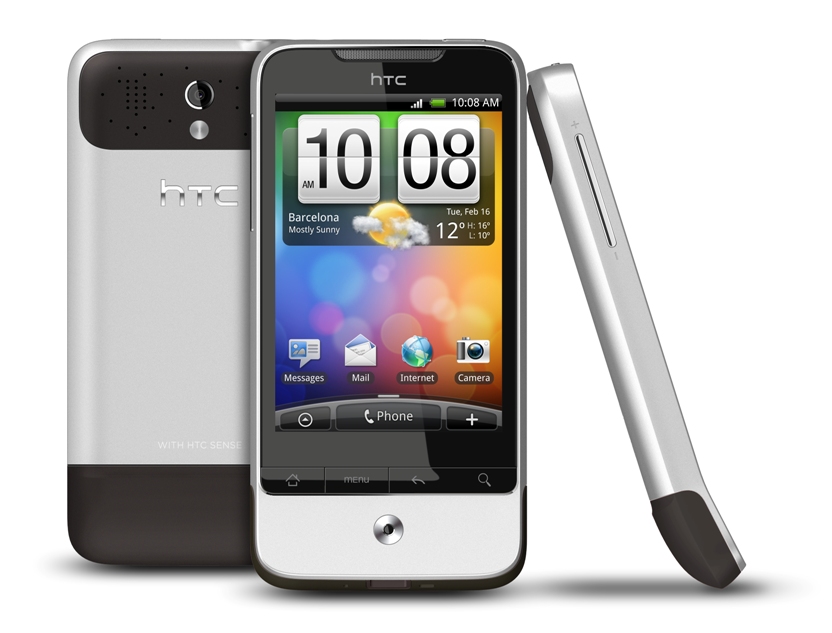Why you can trust TechRadar
Part of the Android 2.0 upgrade was a stronger focus on social networking within the contacts menu - but HTC has been doing that for months now, and the HTC Legend is no different.
The main thing about the contacts menu with the HTC Legend is that we're seeing an integrated view - it doesn't add in your Twitter friends as well, but the upshot of that is you're not left with loads of contacts in your phonebook.
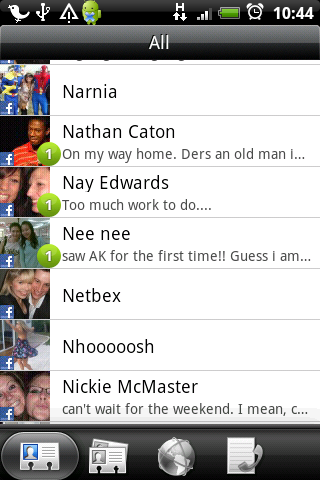
We would have perhaps preferred to see something like Motorola does with MOTOBlur, where you can choose to pop in your Twitter friends if you want to, but don't have to see all of them - it makes it easier to see their updates that way.
There are five different distinct contacts you can have in the phone book - those from the SIM, Google, on the phone, Exchange and from your Facebook list.
While we appreciate Google asking you to download your contacts from Gmail when you use the phone for the first time, we don't recommend you do unless you've spent some time organising them, as you'll end up with reams of single email address entries with no name.
There is an option to only see those names with phone numbers, but that's only apparent afterwards and the sheer number of entries might confuse some people.
But if you want to make use of the phonebook options from Google and Facebook, then prepare to spend a good amount of time with the phone - you'll need to first of all merge all your phone numbers, names and email addresses together online, and then once those are downloaded to the phone, link them to the relevant Facebook account.
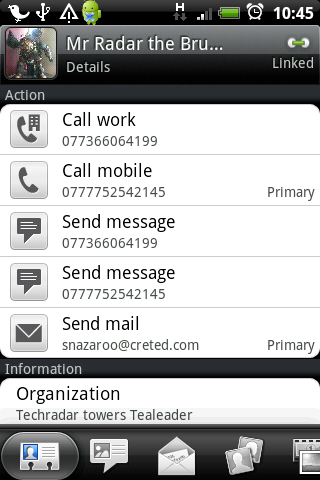
In fairness to HTC, it has spent a long time working out how to make Facebook integration as simple as possible - wherever someone has a phone number on their online profile, and that matches an entry on the phone, the HTC Legend will automatically merge them together.
And after that, it will make accurate suggestions based on email addresses too, so as you go through the phone linking up the profiles, you'll be able to simply press 'Link' to get the suggestions and tie the two together.
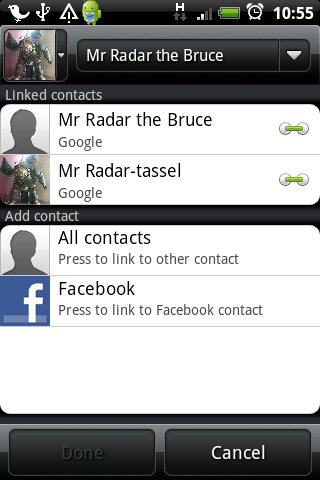
Where there is no email address listed, you'll have to do it manually, which takes some time, but when you've sorted out Google and Facebook then the integrated approach really comes to the fore - status updates, emails, text conversations, call history - even your friend's Facebook and Flickr photos are visible from the phonebook entry.
The Facebook link will also update the person's profile picture on the phone based on their online profile - which we mentioned earlier.
The list of friends is for some reason divided into two - we think it's those with emails and without, but it's annoying that we can just see our friends all in one easy-to-see list, alphabetically.
It would take a very long time to list all the features packed into the HTC Legend's phone book - but the Taiwanese firm has made it very, very easy to see everything from one contact in a variety of ways, something that has come from its heritage in Windows Mobile.
Call quality is also good on the HTC Legend - although we're not sure the design of the phone is right for pushing against your ear.
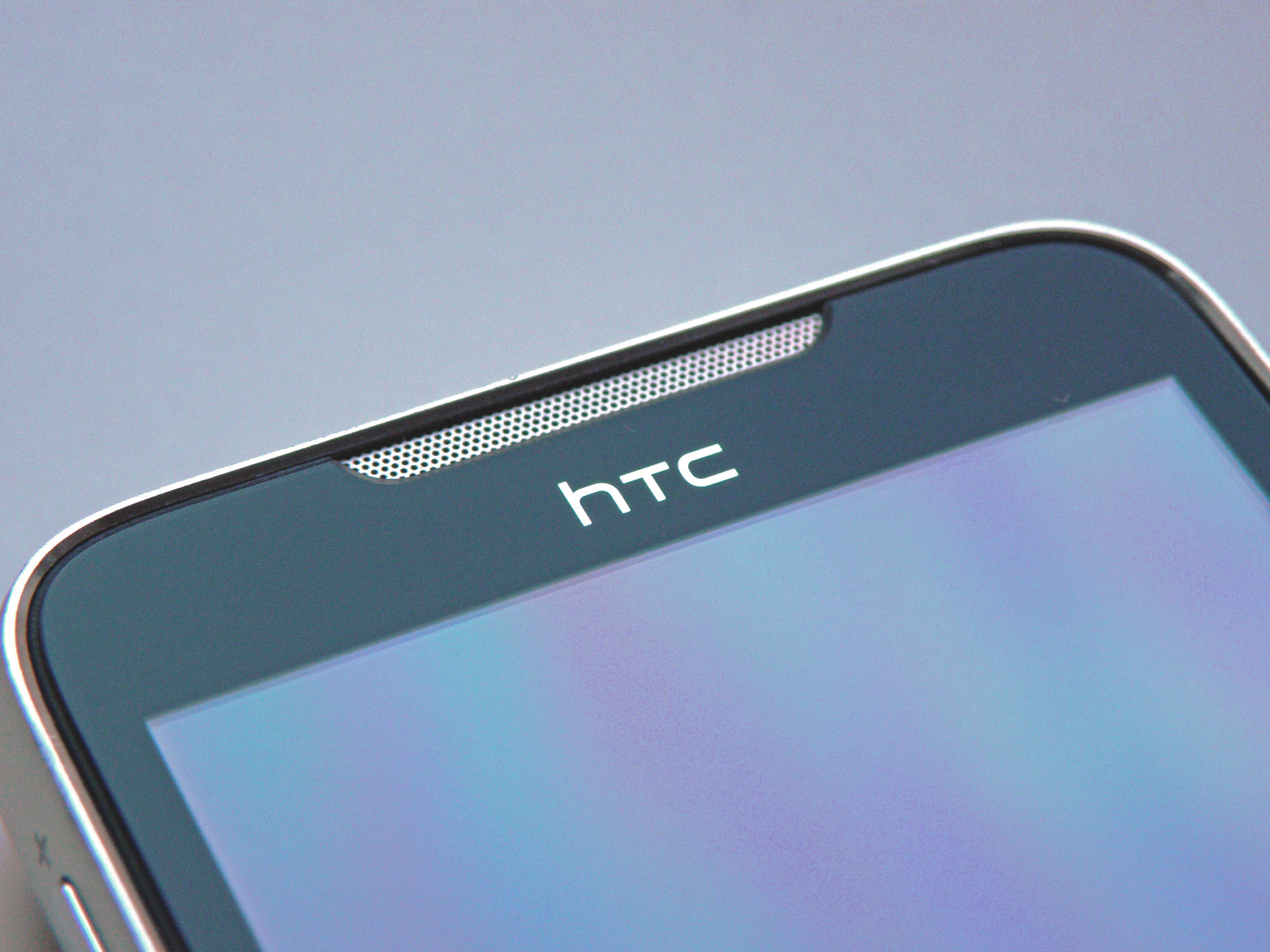
The fact the phone is made from aluminium means it has some fairly sharp edges - if you're ever trying to listen hard to someone, then it can be painful.
The speaker is loud and audible though, with a nice design as mentioned.
Call coverage is pretty good as well - the 3G signal is on a par with most. It's not going to offer you reception in places you've struggled with in the past, but it rarely dropped and we didn't have any instances of randomly dropped calls, which is always a plus.
The HTC Legend also supports smart dialling – bash the virtual numbers as if you were writing in predictive text, and the list of corresponding names comes up.
This feature is on a number of high-end smartphones, and we're surprised that more don't include it - it's actually now irritating when they don't.
Current page: HTC Legend: Calling and contacts
Prev Page HTC Legend: Interface Next Page HTC Legend: Messaging
Gareth has been part of the consumer technology world in a career spanning three decades. He started life as a staff writer on the fledgling TechRadar, and has grew with the site (primarily as phones, tablets and wearables editor) until becoming Global Editor in Chief in 2018. Gareth has written over 4,000 articles for TechRadar, has contributed expert insight to a number of other publications, chaired panels on zeitgeist technologies, presented at the Gadget Show Live as well as representing the brand on TV and radio for multiple channels including Sky, BBC, ITV and Al-Jazeera. Passionate about fitness, he can bore anyone rigid about stress management, sleep tracking, heart rate variance as well as bemoaning something about the latest iPhone, Galaxy or OLED TV.
